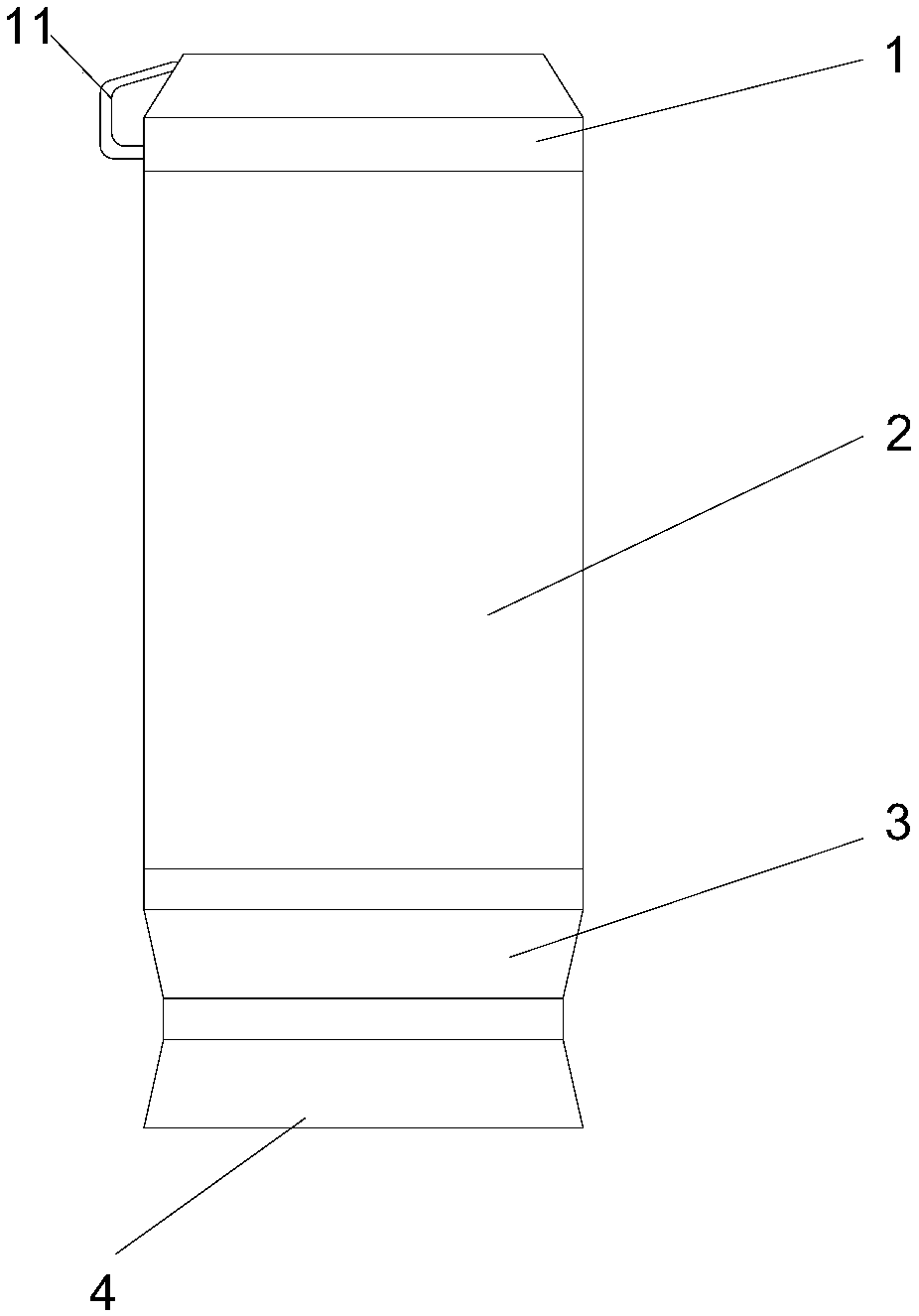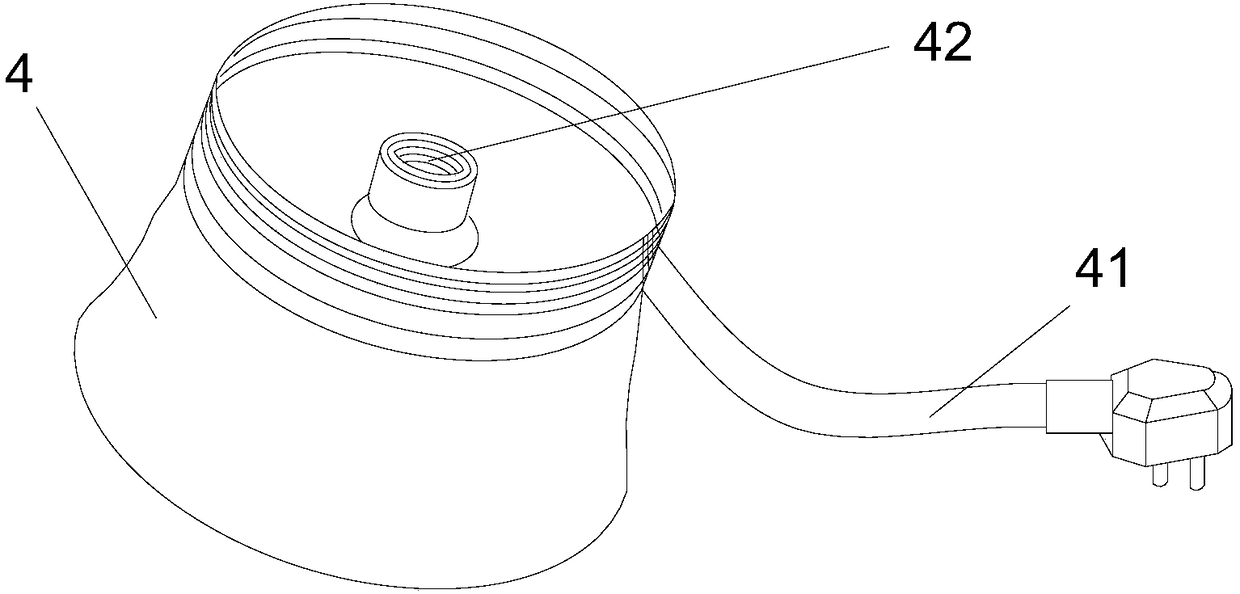A portable thermos cup
A thermos cup and portable technology, applied to drinking utensils and other directions, can solve the problems of inconvenient charging, limited use space, inconvenient portability, etc., and achieve the effect of shortening the heating time, preventing uneven heat, and fast heating rate.
- Summary
- Abstract
- Description
- Claims
- Application Information
AI Technical Summary
Problems solved by technology
Method used
Image
Examples
Embodiment 1
[0032] like Figure 1-5As shown, a portable thermos cup has a capacity of 250mL and includes a cup body. The cup body includes a cup cover 1, a cup body 2 and a cup bottom. The ends are detachably connected to the cup body 2 and the cup bottom 2 respectively, and the cup bottom 3 is provided with a heating assembly and a first conductive connection port 32 electrically connected to the heating assembly; the heating assembly is a heating plate 31; image 3 As shown, the cup bottom 2 4 is a plug-in chassis, and the plug-in chassis is connected with a power plug 41. The plug-in chassis is provided with a second conductive connection port that can be connected to the first conductive connection port 32 and realize the heating of the heating element after power supply. 42. After the cup bottom-3 is connected to the plug-in chassis, a power plug 41 is formed in the plug-in chassis; figure 2 As shown, the bottom of the cup bottom-3 is provided with a dustproof cover 5 matching the ...
Embodiment 2
[0039] The structure is the same as that of Embodiment 1, and the basic working principle is the same, the difference is:
[0040] 1. The heating plate is made of the following raw materials: 8 parts by weight of pottery clay, 5 parts of talcum powder, 5 parts of fused magnesia, 5 parts of carbon fiber, 8 parts of quartz, 3 parts of lanthanum chromate, aluminum oxide After the 3 parts are mixed, they are calcined and melted at a high temperature of 850°C to obtain a molten product, and then cooled to 300°C, poured into a heating plate mold for molding, and then rapidly lowered to room temperature in a nitrogen environment for shaping, and the heating plate can be obtained.
[0041] 2. The casing 20 is made of a mixed metal material, and the mixed metal material is composed of 3 parts by weight of copper, 3 parts by weight of zinc, 3 parts by weight of nickel, and 3 parts by weight of iron. The shell 20 made by mixing these four materials not only improves the crack resistance,...
Embodiment 3
[0047] The structure is the same as that of Embodiment 1, and the basic working principle is the same, the difference is:
[0048] 1. The heating plate is made of the following raw materials: 5 parts by weight of pottery clay, 4 parts of talcum powder, 4 parts of fused magnesia, 3 parts of carbon fiber, 5 parts of quartz, 2 parts of lanthanum chromate, aluminum oxide After the 2 parts are mixed, they are calcined and melted at a high temperature of 750°C to obtain a molten product, and then cooled to 200°C, poured into a heating plate mold for molding, and then rapidly lowered to room temperature in a nitrogen environment for shaping, and the heating plate can be obtained.
[0049] 2. The shell 20 is made of a mixed metal material, and the mixed metal material is composed of 2 parts by weight of copper, 2 parts by weight of zinc, 2 parts by weight of nickel, and 2 parts by weight of iron. The shell 20 made by mixing these four materials not only improves the crack resistance, ...
PUM
| Property | Measurement | Unit |
|---|---|---|
| Functional group degree | aaaaa | aaaaa |
Abstract
Description
Claims
Application Information
 Login to View More
Login to View More - R&D
- Intellectual Property
- Life Sciences
- Materials
- Tech Scout
- Unparalleled Data Quality
- Higher Quality Content
- 60% Fewer Hallucinations
Browse by: Latest US Patents, China's latest patents, Technical Efficacy Thesaurus, Application Domain, Technology Topic, Popular Technical Reports.
© 2025 PatSnap. All rights reserved.Legal|Privacy policy|Modern Slavery Act Transparency Statement|Sitemap|About US| Contact US: help@patsnap.com



